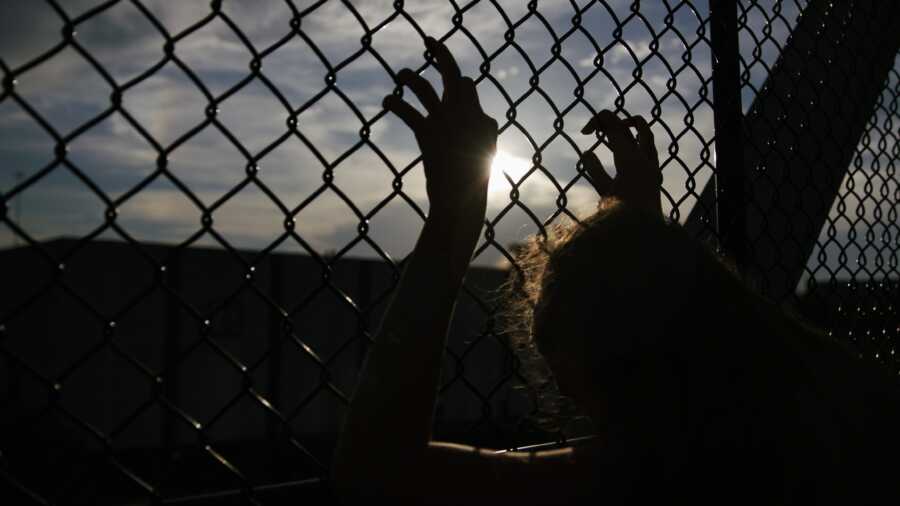What is sex trafficking?
Sex trafficking is the act of forcing or deceiving an individual into prostitution. Victims may be coerced into prostitution for an unknown period of time, while in other cases victims are coerced in prostitution until a debt is paid off, otherwise known as debt bondage.
How does sex trafficking work?
Sex trafficking victims are notoriously groomed into trafficking and given the illusion of being in control by their procurer. Women may be tricked into believing they are an equal part of a gang or that their pimp is actually their boyfriend.
A trafficker or pimp working alone or in a gang will create a “family” to lure men and women in for different forms of servitude. When recruited as a member or integral part of a group, the likelihood of self-identifying as a victim heavily decreases.
Traffickers may initially pretend to be a boyfriend or friend to the victim by showering them with attention and gifts, then gradually become abusive over time before coercing them into trafficking.
It is also not uncommon for women to be “sexed” into a gang for recruitment purposes, which can be used as a tactic for grooming them for later abuse.
Traffickers may be business owners (strip clubs), shift leaders, fake massage business managers, brothel managers, or independent traffickers. Clubs and bars involved in sex trafficking offer commercial sex through escort services, massage parlors, or brothels that are connected to the bar or located nearby.
When victims are without their trafficker during times of forced labor, it is likely they will stick to a scripted story, refuse to cooperate, or claim they are there by “choice” due to a strong trauma bond brought on by a cycle of abuse.
How many people are sex trafficked each year?
According to the Department of Health and Human Services, approximately 600,000 to 800,000 people are sex trafficked each year across international borders around the globe.
According to the U.S. Department of State, between 14,500 – 17,500 of those victims are trafficked into the United States annually. These estimates include not only women, but children and other genders such as men.
How do traffickers get their victims?
Most trafficking victims know their traffickers. Traffickers lure victims in by threats, force, coercion, or manipulation. They gain a victim’s trust with a false sense of security by providing basic survival needs like food, shelter, clothing, etc.
Some recruitment tactics include:
- False promises
- Seduction or grooming
- Internet chat rooms
- Profile sharing sites
- Peer recruitment
- Poverty or survival sex to pay rent or provide for the family
- Drug distribution tasks with an unrealistic quota and deadline
- Gang-based exploitation
- Promises of a committed or loving relationship
Traffickers exploit the fact that for many victims “the life” is their first experience of belonging or family.
While many believe sex trafficking always entails a kidnapper, there are a number of different techniques used to recruit victims and traffickers may look different from one case to another:
Interfamilial Pimping
A form of sex trafficking in which parents, caregivers, or family members coerce an individual into prostitution.
Guerilla Pimping
A form of sex trafficking in which an unknown individual or stranger kidnaps, physically harms, or threatens force to coerce an individual into prostitution.
Romeo Pimping
A form of sex trafficking in which a romantic partner coerces an individual into prostitution.
CEO Pimping
A form of sex trafficking in which false advertising for modeling, acting, or dancing opportunities results in coercion of an individual into prostitution.
What are some identifiable signs of sex trafficking?
Labor trafficking signs:
- An abusive employment situation
- A person speaking for an individual and/or escorting them to and from work
- An employer in control of their employee’s identification or immigration documents
- An employee locked inside a residence or workplace
- An employee who is unable to leave a particular job
- Threats to employee or employee’s family by an employer
- Existing “debt” owed by an employee to employer
- An employee living in an employer-owned or controlled residence
Sex trafficking signs:
- New tattoos or brandings
- A drastic change in dress
- New items with no new income
- Sudden bruises
- Physical exhaustion or malnourishment
- Change of friends
- Prepaid credit cards
- Calls at all hours
- Frequent pregnancies or STIs
- Truancy
- Coming home late/not coming home
Please note that the absence of the above risk factors does not mean a person has not been trafficked, as no two cases are precisely alike.

What is the impact of sex trafficking on victims?
Victims of trafficking are impacted in all aspects of their being including mentally, physically, emotionally, and spiritually.
The physical and psychological abuse victims experience most often leads to emotional and mental health issues such as:
- PTSD
- Depression
- Anxiety
- Self-blame
- Suicidal thoughts
- Drug and/or alcohol abuse
- Eating disorders
- Guilt
- Shame
- Anger
- Trauma bonds
- Living in a perpetual state of survival mode
What are some healing tips for sex trafficking survivors?
1. Drug and alcohol treatment (residential or outpatient)
When survivors escape human trafficking, they can carry many traumas such as addiction or alcoholism.
Receiving treatment and a plan for recovery can help them stabilize and work on their inner trauma while developing effective coping tools to better navigate through life.
2. Therapy
It is important for survivors of human trafficking to attend therapy and have a safe place to talk about their traumas with someone experienced and trustworthy.
3. Support groups
Attending a support group that is a safe place for the survivor is crucial for their healing journey. When they have a place to share their truth with others who have experienced the same trauma, survivors can receive healing, empowerment, and a sense of family.
4. Spirituality
For some survivors, believing there is a greater power looking after them can spark a positive spiritual connection.
It is important for survivors to find ways to ground themselves on their healing journey, whether that is faith, meditation, being in nature, or another avenue.
5. Peer-to-Peer Mentor
Due to the shame and guilt many victims carry, it may be easier for them to connect to someone who shares the same traumatic experiences.
Allowing a victim an nonjudgemental environment to understand their experiences and the barriers associated with exiting trafficking can help them gain access to justice, supportive services, and change their mindset from victim to survivor.
6. Empowerment
When a survivor is ready to share their truth, they may find a sense of empowerment through courageously shedding light on hidden secrets.
By ultimately stepping up and saying, “NO MORE,” they may regain their power by not only speaking for themselves but representing the voiceless survivors who have yet to share.
7. Giving Back
When a survivor is ready to use their pain for good, it gives them a sense of purpose and motivation to get out of bed in the mornings and set achievable goals for the day.
Giving back allows a survivor to put aside their problems or negative thinking and focus on helping others, which can strengthen their sense of purpose, passion, and self-worth.
How can we combat human trafficking?
If no one purchased commercial sex, the crime of sex trafficking wouldn’t exist.
In order to eradicate human trafficking, we must address the issue of demand to create a culture where the buying and selling of human beings for another’s sexual gratification or profit is not looked upon as normal behavior.
The problem is currently too large for arrest and prosecution to stop, but prevention, awareness, and support are key.
Prevention
Making trafficking completely transparent to us all.
Education
Helping all kinds of forced laborers identify themselves as victims.
Outreach
Communicating with vulnerable populations to offer alternative opportunities and support.
Human trafficking affects humans around the world and at home in your country. Government and private organizations are not the only ones who can take action to help stop modern slavery; everyone can do their part if they want to. We must work together.
This story was written exclusively for Love What Matters by human trafficking survivors Elizabeth Quiroz, Megan Berger, and Lisa Diaz-McQuaid. You can donate to their organization Redemption House of the Bay Area to support other survivors. Join the Love What Matters family for more content like this by subscribing to our newsletter.
Read Elizabeth’s sex trafficking story:
Do you know someone who could benefit from reading this? SHARE this story on social media with family and friends.


